HOLY COW!
Obligitory numismatic content:
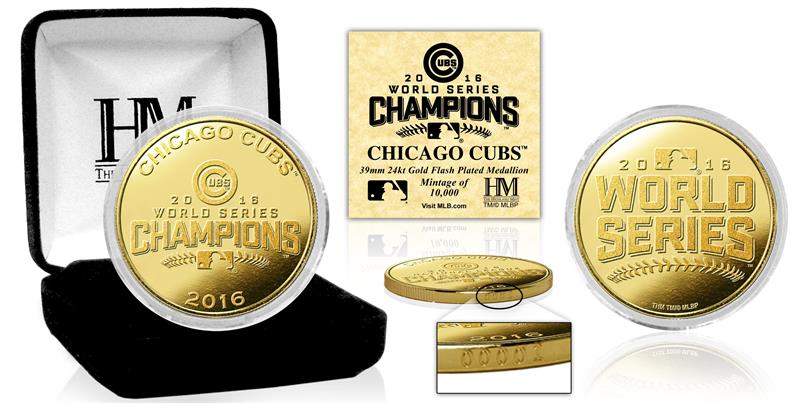
Cubs numismatic collectibles can be purchase from the Highland Mint or MLBShop.com
- Medal image courtesy of the Highland Mint.
- Cubs W Banner courtesy of the Chicago Cubs and Major League Baseball.

Cubs numismatic collectibles can be purchase from the Highland Mint or MLBShop.com
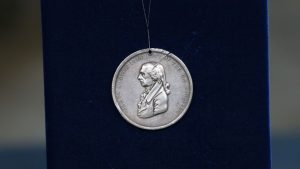 Finding coins in pocket change can be a lot of fun. Then there are those who find hoards of coins buried in the ground or just stored somewhere that people forgot. From shipwrecks to treasure hunts, we all dream of finding the next jackpot somewhere.
Finding coins in pocket change can be a lot of fun. Then there are those who find hoards of coins buried in the ground or just stored somewhere that people forgot. From shipwrecks to treasure hunts, we all dream of finding the next jackpot somewhere.
On your great grandfather’s farm, a worker was plowing the field and found a silver medal. It has the image of President James Madison on one side and what looks like a peace medal on the other. Rather than letting go, great grandpa traded three hogs for the medal.
The medal gets handed down from generation to generation until one of his ancestors takes the medal to Antiques Roadshow to find out what it is worth.
You are told that it is a silver James Madison Indian Peace Medal. The 1809 medal was designed by assistant engraver John Reich and struck at the U.S. Mint in Philadelphia. It is not the largest of the medals but at 2½-inches, it is a fairly significant medal.
What is it worth? See what Jason Preston of Jason Preston Art Advisory & Appraisals of Los Angeles said about the medal on Antiques Roadshow:
Did you guess right?
 Toys for Tots is a charitable organization founded in 1947 by Major Bill Hendricks, a U.S. Marine Corps Reserve officer. MAJ Hendricks was inspired by his wife who wanted to donate a homemade Raggedy Ann doll to a needy child in the Los Angeles are but could not find an organization that could help. He organized other reservists and collected 5,000 toys to distribute in the Los Angeles area during the Christmas season.
Toys for Tots is a charitable organization founded in 1947 by Major Bill Hendricks, a U.S. Marine Corps Reserve officer. MAJ Hendricks was inspired by his wife who wanted to donate a homemade Raggedy Ann doll to a needy child in the Los Angeles are but could not find an organization that could help. He organized other reservists and collected 5,000 toys to distribute in the Los Angeles area during the Christmas season.
Although Toys for Tots has been only accepting new toys since 1980 because of the time to process used toys, every year the organization collects millions of toys to make Christmas brighter for children who would not otherwise receive toys. It is consistently rated one of the top charities in many different rankings and can boast one of the largest program to support services ratio. In 2015, Toys for Tots reported that only 3-percent of their monetary donations were used for administrative and support services.
Charities are trying to survive as donations have fallen since the Great Recession of 2008. Their balance sheets are getting better but many have not recovered to pre-recession levels. When they mail their letters asking for donation, most charities have added “prizes” to their request in order to get your attention. Some of the usual gimmicks have been address labels, stamps to mail back the donation, and some have added a nickel to the response form asking that it be returned with the donation. I have also received a lot of stickers and religious-based charms.
As a supporter of Toys for Tots, I recently received a request for donation. Rather than having any of the usual gimmicks a medal was attached to the request. Not an ordinary medal but a bronze medal for the Toys for Tots program. The 26mm medal (a quarter is 24.26mm) features the Toys for Tots logo on one side and the U.S. Marine Corps logo on the other. The 2mm thin (a quarter is 1.75mm) medal has an antiqued finish.
A tradition of military organizations is the presenting of challenge coins. They are part of military tradition that started during World War I when Ivy League students went to war and created these coins as an act of camaraderie. Typically, a challenge coin is a small medal, usually no larger than 2-inches in diameter, with the insignia or emblem of the organization. Two-sided challenge coins may have the emblem of the service on the front and the back has the emblem of the division or other representative service. Challenge coins are traditionally given by a commander in recognition of special achievement or can be exchange as recognition for visiting an organization.
While the size of this Toys for Tots medal is smaller than the typical challenge coin, it can be considered a challenge coin. A challenge coin given by the Marine Foundation to their donors in recognition of the support of the organization.
I appreciate the recognition from the Marine Foundation and will continue to be a supporter for the Toys for Tots program.
 It was July 20, 1969, Neil Armstrong and Edwin “ Buzz” Aldrin, made history by being the first humans to land on Earth’s only natural satellite. A mere 238,900 mile trip began with the launch of the Saturn V rocket from the Kennedy Space Center on July 16, 1969, with Michael Collins who orbited over the moon in the command module, the trip fulfilled the promise of President John F. Kennedy who said to congress on May 25, 1961, “I believe that this nation should commit itself to achieving the goal, before this decade is out, of landing a man on the moon and returning him safely to the earth.”
It was July 20, 1969, Neil Armstrong and Edwin “ Buzz” Aldrin, made history by being the first humans to land on Earth’s only natural satellite. A mere 238,900 mile trip began with the launch of the Saturn V rocket from the Kennedy Space Center on July 16, 1969, with Michael Collins who orbited over the moon in the command module, the trip fulfilled the promise of President John F. Kennedy who said to congress on May 25, 1961, “I believe that this nation should commit itself to achieving the goal, before this decade is out, of landing a man on the moon and returning him safely to the earth.”
Kennedy would have been pleased with the events of 47 years ago, today.
Michael Collins design the mission insignia. Collins said that he wanted a symbol to represent a “peaceful lunar landing by the United States.” He also left the names of the astronauts off of the insignia so that it would represent everyone who worked on the mission. It is one of the few mission insignias that does not include the name of the astronauts.
The first numismatic-related item that used the Apollo 11 mission insignia were the medals made by the Robbins Company of Attleboro, Massachusetts. Although there were many space-flown numismatics that have surfaced over the years, the most famous from Apollo 11 was the sterling silver Robbins Medal that was presented to Wally Schirra by Neil Armstrong. Armstrong and Schirra were good friends. He gave the medal to honor his friend, the first three-time astronaut who retired just before the Apollo 11 flight.This medal was sold for $33,460.00 on April 18, 2013 by Heritage Auctions.
In March, before the Apollo 11 launch, President Dwight Eisenhower died of congestive heart failure at the age of 78. To honor the late president, congress passed the bill to produce what ended up to be the last large dollar coin with the portrait of Eisenhower. It was Rep. Bob Casey (D-TX) who remembered that Eisenhower created NASA and proposed that the reverse of the coin use the Apollo 11 mission insignia rather than just a heraldic eagle.
The Eisenhower dollar was released in 1971 and struck until 1978. Other than relief and varieties, the only design change was made in honor of the nation’s bicentennial in 1975-76.
Beginning in 1976, the U.S. Mint was looking to reduce the costs of coin production and was testing different shapes and compositions for a new dollar coin. In order to appease the powerful vending machine industry, the result was a coin that was too similar in size and composition to the quarter dollar. Congress made the decision to honor Susan B. Anthony and leave the Apollo 11 mission insignia on the reverse.
Chief Engraver Frank Gasparro designed the reverse for both the Eisenhower and SBA dollars using the Apollo 11 mission insignia. An iconic design even though the coins were less than successful.
A few weeks ago I wrote about the potential effects of Brexit on markets should the Brits vote to leave the European Union. When the OUT vote won by a slim margin, there was an instant worldwide reaction. In the subsequent weeks, we have seen world markets react to everything. After an initial fall in markets because of Brexit they have recovered only to be sent back into uncertainty with world events.
The London PM Gold Fix was $1,265.12 before the polls closed on June 23. The next day, the London PM Gold Fix closed at $1,315.50 (4-percent increase). On July 15, the PM Gold Fix closed at $1,327.00, 4.9-percent increase since the vote. Experts are saying gold could continue to climb at the 4-percent rate for the near future.
Silver has been on a slow and steady rise for most of the spring also saw a bump following the Brexit vote. When the London Silver Fix closed at $17.29 on June 23, this was already a $3.29 increase (23.5-percent) from the January 4 first close of 2016 price of $14.00. After the results were announced, London Silver Fix closed at $18.04, a 4.3-percent increase. With the London Silver Fix closing at $20.14 on July 15 (16.48-percent increase), some pundits are suggesting that silver will continue to outperform gold for the near future.
When I wrote about Brexit, I also mentioned the “In/Out UK EU Referendum Medallion” produced by Chard(1964), a British metals dealer. After the post, the folks at Chard saw a small bump in sales from collectors the United States from a few of my readers. I was not paid to mention the medal. I just found the information online and thought it was an interesting idea. Shortly before the vote, someone at Chard contacted me and offered to send me some medals.
After a swim across the pond, the medals arrived in my physical mail last weekend. Even though I thought Brexit was a bad idea, the medals are still very cool. Design is the same on both medals. One is copper and the other is Abyssinian Gold, a type of brass made of 90-percent copper and 10-percent zinc that has a gold-like color. Medals are 31mm in diameter and weighs 14 grams making it a nice sized coin for flipping.
Chard sent two sets of the medals. I will keep one set and donate the other to my coin club’s annual auction whose proceeds will benefit the Scouts and other numismatic-related education in our region.
It appears that these medals can still be purchased for £2.95 each ($4.33 at the current exchange rate) plus shipping (estimated at £6.00 or $8.80) directly from Chard’s website. I am not making money from this endorsement. I just think it’s a fun collectible!

Brexit reminds my of The Clash’s song “Should I Stay Or Should I Go?”
The European Union was formed after World War II in various forms in an attempt to collectively rebuild Europe by integrating their resources. The first formal attempt was the Treaty of Rome in 1957 signed by Belgium, France, Italy, Luxembourg, the Netherlands and West Germany to create the European Economic Community (EEC) and established a customs union. What we know today as the European Union was established when the Maastricht Treaty became effective in 1993.
As part of the integration under the E.U. is the common currency known as the Euro. First distributed in 1999 with 14 participating nations, now includes 19 of the 28 nations plus the Vatican, Monaco, and San Marino who are not formally members of the E.U. The United Kingdom (England, Northern Ireland, Scotland, and Whales) continues to use the pound sterling, sometimes referred to the Great Britain Pound. Ireland, sovereign from the United Kingdom, uses the euro.
The U.K. is holding this vote because Prime Minister David Cameron promised to hold this vote as part of his 2015 campaign. When the Conservative Party won the majority of seats in Parliament, Cameron, as party leader, was elected by Parliament to serve as Prime Minister.Interestingly, many of the arguments for leaving the E.U. are similar to those being applied by the apparent nominee for the Republican Party in the United States while those campaigning to remain in the E.U. are similar to the apparent Democratic Party nominee. It just goes to prove that regardless of which side of the pond you live, politics is polarizing.
For those of us Yanks who want to learn more, BBC News has published a good overview with links to more in-depth that you can click here to read it, if interested.
So why is this significant for a coin collector’s blog? We do look at economic matters affecting collecting including those whose collection are being put together for speculation including the purchase of bullion-based numismatics. Also, the outcome could not only affect the world economic system but could also have an impact for those who collect foreign coins.
If the U.K. votes to remain in the E.U. then the status quo remains. The British will go back to their partisan politics and scratch their heads over the U.S.’s partisan politics known as the 2016 presidential election. Markets that have tightened in anticipation of what Brexit may mean could see this as a temporary reprieve.
If the U.K. votes to leave the E.U. the markets may not like it and the economy can go into a freefall. Markets do not like uncertainty and a vote for the U.K. to leave the E.U. would bring about the uncertainty of “what happens next?” and “now what?” Business leaders, who are largely in favor of remaining the in E.U., has noted that it makes it easier for them to move money, people and products around the world. What happens when those doors are closed?
As we have seen when economies are uncertain, markets react by selling off speculative assets, like stocks, and running to safer investments like trustworthy bonds and precious metals. In the last three weeks in the run up to Brexit, gold is up $56 (4.6-percent) in the last three weeks and silver is up $1.41 (8.8-percent). Both are off their annual highs set on June 16 when published polls are suggesting that Stay has a lead greater than the margin of error over Leave.
Market watchers can watch what happens to the Tokyo Nikkei 225 market index and Hong Kong’s Hang Seng Index. Both are the major indexes in the Asia/Pacific region and will be around their midday trading sessions on Friday.
Collectors looking for something numismatic to add to their collection might want to consider the In/Out UK EU Referendum Medallion produced by Chard(1964), a British metals dealer. These copper medals were produced for the Britons who were undecided. Flip the medal before you vote to decide whether to remain or leave. The Remain side has the E.U. flag surrounded by “Remain,” “Better Together,” “United,” and “Stronger in Europe.” The Leave side has the British Union Jack with “Brexit,” “Independence,” “Leave,” and “Sovereignty.”
Medals are 31mm in diameter and weighs 14 grams. They come in pure copper or Abyssinian Gold, a type of brass made of 90-percent copper and 10-percent zinc that has a gold-like color. They can be purchased for £2.95 each ($4.33 at the current exchange rate) plus shipping (estimated at £6.00 or $8.80) directly from Chard’s website.
Those who followed me on Twitter knows that I had a late start. We working stiffs do have weekend responsibilities that have to be taken care of before we can go out to play. Once I was able to complete my errands, I was able to travel north to Baltimore.
I may be one of the few people who are not from Baltimore who likes Baltimore. But going to Baltimore’s Inner Harbor area can be a lot of fun, even if it is frustrating trying to find parking. Then again, show me any city that does not have a parking problem and I will show you a city that is not as fun.
Once I was able to find parking I walked to the convention center. After entering in the early afternoon on Saturday I was struck by the number of empty tables that could be seen from the entry door. In all areas of the three convention center halls, the number of empty tables was surprising. I was also surprised to see a number of shared tables being half used.
As I walked around the convention center floor I was struck by the number of tables that were either never occupied or the dealer did not show up at all on Saturday. You can tell these tables from the others by the number of fliers left on the table. Some tables had rental cases with the keys in them showing that these tables were either unused or the dealer left early.
I recently learned that a table for the Baltimore show costs $750. Add the cost of travel, food, lodging, and the inventory, does the costs justify leaving and not trying to make money? When I discussed this with a regular dealer, I was told that some that are not having a good show will leave early to cut their losses.
Of the dealers that were left, there was a nice mix of items. For once, I did not get the impression that one type of coin was more popular than the other. In fact, I think this is the first show where bullion and bullion-related coins were not the focus. I was able to find American Silver Eagles without problem but finding some of the foreign bullion coins was a little more challenging.
Whitman, the sponsor of the show, had their own booth and was actually selling discounted items. In prior years, Whitman would sell their own products at full price but this time offered some discount. And they had a clearance table. I did not buy from the clearance table because they did not have anything I wanted but there were some nice and current items that were worth the value.
One thing Whitman did was to give away hardcover copies of the 70th Edition of the Red Book autographed by Ken Bressett and Jeff Garrett. All I had to do was fill out a ticket at the Whitman booth, return to the booth at the time of the drawing, and wait for them to give away the eight books being offered on Saturday. I think I was the fourth book given away.
Previously, I noted that the choices of numismatic literature has diminished. While the death of numismatic book dealer John Burns is a tragic story in and of itself, what has not happened is that someone has not stepped into that market. Aside from being intelligent and a character with a sharp wit, his inventory was so varied that I was always able to find something a little off-beat or out of the ordinary that was intriguing. If someone wants to move into numismatics but wants to occupy a different space, this might be something for you to get into.
The most fun thing I found was the dealer that used kiddie pools as their junk box. Rather than going through boxes or bins, they set up three kiddie pools and threw in a lot of low value slabs and some other items. They had a lot of slabs and it was interesting diving into the pools looking for something fun. Although I did not buy anything from the pools, I did buy some other coins and a non-numismatic related book from their discount table.Every show I try to find one neat item that is out of the ordinary. As I approached one table I noticed there were a few large brass medals on the table. I am intrigued by brass medals both for their size and a lot of the artwork. I have seen many brass medals with art that rival anything produced on canvas for their beauty. But this one was different in that it bore the local of Carnegie Mellon University, where I went to graduate school.
Carnegie Mellon was formed in 1967 when the Carnegie Institute of Technology (Carnegie Tech, founded in 1900) merged with the Mellon Institute of Industrial Research (founded in 1913). I earned a masters degree in one calendar year 1999-2000. Although I was an older student, it was a great experience for me and my (late) first wife.
The reverse of the medal is an image of Hamerschlag Hall, the first permanent building of Carnegie Tech and the home of the current College of Engineering. Around the rim celebrates the 50 Year Reunion with a space for the college which is having the reunion and the year being celebrated. Since the date engraved on the reverse is 1938, it was given to its previous owner in 1988. But that does not bother me. The front has the Carnegie Mellon logo and a great reminder of my good year in Pittsburgh.
The next Whitman Expo will be July 14-17. I hope the dealers that show up will be there if I have to spend the morning running errands.
I am convinced that if there is something to celebrate there is a coin, medal, or token to collect in its honor.
Today, my challenge is to determine if there is something numismatically available to collect for Leap Day, that once every four years celebration of the 29th of February.
For today’s collecting adventure we venture into the world of geocaching. For those not familiar with geocaching, it is an adventure activity in which the participants use the global positioning system (GPS) to navigate to find small containers with treasures. The small containers are called a “geocache” or “cache.” These geocaches contains a logbook that is signed with by the finder with a code name and placed back where it was found.
Almost anything can be included in the geocache for a prize. One such prize is a geocoin. Similar to a challenge coin, a geocoin is a specially designed medal that is the prize for finding the geocache. There is a worldwide community of geocache enthusiasts that you can find at geocaching.com.
For one of the meeting at my coin club, two of our young numismatists taught some of us old folks about geocaching and showed off some of the geocoins they have found or collected from various sources. Some of the designs were phenomenal. There was one geocoin made for a gathering of Maryland enthusiasts that was so well done that I have been looking to buy one since.
Without the constraint of rules, laws, and congress, some have created quite a number of interesting geocoins to celebrate the leap year. To celebrate Leap Day and the geocaching community for the inspiration, here are some of the interesting geocoins I have found on my online search.
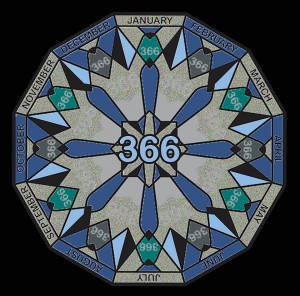
NoCo (Northern Colorado) 366 Geocoin (courtesy of User Memfis Mafia on geocaching.com)
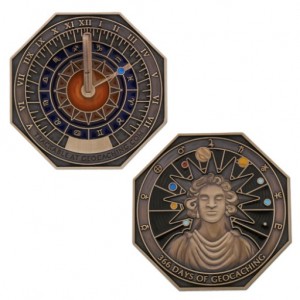
Leap Year Sundial Travel Tag (courtesy of Geocoins For All)
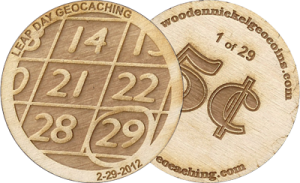
Leap Day Geocoin Race (Courtesy of Wooden Nickel Geocoins)
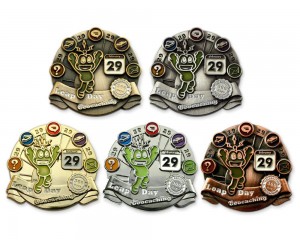
Leap Day 2016 Geocoins (courtesy of Geo Coin Shoppe)
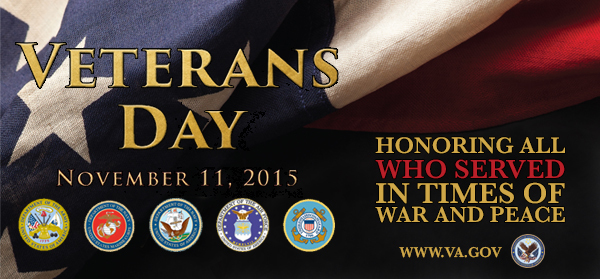
Our veterans left everything they knew and loved and served with exemplary dedication and courage so we could all know a safer America and a more just world. They have been tested in ways the rest of us may never fully understand, and it is our duty to fulfill our sacred obligation to our veterans and their families. On Veterans Day, and every day, let us show them the extraordinary gratitude they so rightly deserve, and let us recommit to pledging our full support for them in all they do.
I know it has been a while since I wrote a substantive post. But as the holiday season is upon us, business has picked up and I am doing a lot of buying and selling. While good for business, it has not provided me time to write. I have a backlog that I will get to, so please be patient.
Of the items I am buying and selling are Challenge Coins. While not coins in the strictest sense of the term challenge coins are the size of large dollar coins or crowns issued, usually issued by a military organization and given to someone as a sign of appreciation. Back in 2009, I wrote about NBC news anchor Brian Williams admitting that he collected challenge coins.
Although given in appreciation, not everyone appreciates their significance and, in some cases, their beauty. Aside from finding them in estate sales, they are included in large lots of items I purchase while looking for other items. For some reason, the sellers throw them into the lot thinking that they are not worth much.
For the most part, challenge coins do not have value the way coins have value. Most challenge coins are enameled bronze disks. What makes them interesting is the topic, the location depicted, or who issued the coin. Some challenge coins are very basic while others have artistic value that rivals anything issued by government mints.
Although I have handled hundreds of challenge coins in the last year, two stand out as exception. Unfortunately, I was so excited to have found them that I sold them to new owners before taking pictures. One was a coin that was overlaid on a large “V” which was to be the Roman numeral for five. It was very striking. The other was a coin that was three-inches wide by one-inch tall in the shape of a dog bone. This very unique challenge coin was issued for an anniversary of the police canine unit of Amtrak in Chicago. Aside from various insignias and images of the five types of dogs that Amtrak Police Canine Unit trains, the coin included representative flags including one for the City of Chicago.
Here are some challenge coins that I have recently sold:
Finally, if you want to start your own challenge coins collection, here are a few I have for sale for you to start: